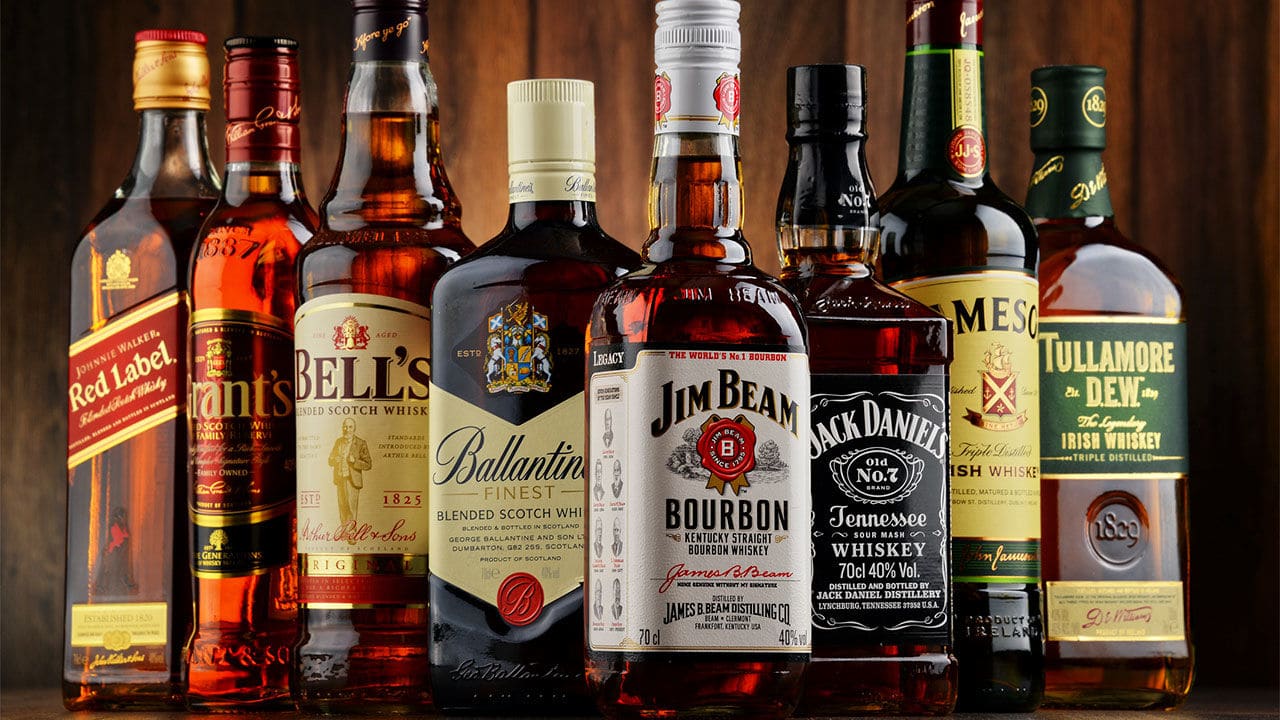
SCOTLAND, IRELAND, CANADA, KENTUCKY…HOW CAN IT ALL BE WHISKY?
Whisky (or whiskey in the US) comes in many colors, aromas and origins and is distilled from various grains. So what makes each style unique and what differentiates a Kentucky bourbon from an Irish whisky? We’ll dive in to all of these questions and more to give you a complete and thorough knowledge and me an incredible buzz. When you’re finished reading you’ll be an expert…and I’ll be….well, hammered.
Whisky is a type of distilled alcoholic beverage made from fermented grain mash. Various grains (which may be malted) are used for different varieties. These including barley, corn, rye, and wheat. Whisky is typically aged in wooden cask or barrels, that are generally made of charred white oak. What was in these barrels previously, also comes into play.
Whisky is a strictly regulated spirit worldwide with many classes and types. These regulations however, are unique to the area or country the spirit is being made in. The typical unifying characteristics of the different classes and types are the fermentation of grains, distillation, and aging in wooden barrels. In this post we will cover 4 of the most popular types of whisky (or whiskey)
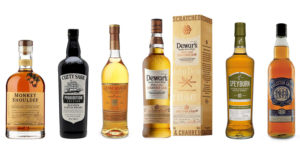
Scotch – With scotch we already have a few wrinkles. There are 5 different types or categories. For the sake of this article, we will be looking at the 2 most popular types of scotch, blended scotch whisky and single malt scotch whisky. We will look at single grain scotch whisky, blended malt scotch whisky (sometimes called vatted or pure malt) and blended grain scotch whisky in future. All Scotch whisky must be aged in oak barrels for at least three years. Any age statement on a bottle of Scotch whisky, expressed in numerical form, must reflect the age of the youngest whisky used to produce that product. So, even if a whisky was predominantly 25 year old whisky, but 10% was only 3 years old. It would be classified as a 3 year old whisky. Incidentally, that would never happen, but I wanted to give you an example. A whisky with an age statement is known as guaranteed-age whisky. A whisky without an age statement is known as a no age statement (NAS) whisky, the only guarantee being that all whisky contained in that bottle is at least three years old. The minimum bottling strength according to the regulation is 40% alcohol by volume or 80 proof.

Blended scotch whisky means a blend of one or more single malt Scotch whiskies with one or more single grain Scotch whiskies. These can, and usually do come from all over Scotland. Single malt scotch must have been distilled at a single distillery using a pot still distillation process and made from a mash of a single malted barley. These may seem like pretty definitive categories, which they are. However, when we get into the other 3 designations, the descriptions will tighten up a bit.
As of 23 November 2009, the Scotch Whisky Regulations (SWR) define and regulate the production, labelling, packaging as well as the advertising of Scotch whisky in the United Kingdom. They replace previous regulations that focused solely on production, including the Scotch Whisky Act 1988. The SWR includes broader definitions and requirements for the crafting, bottling, labelling, branding, and selling of “Scotch Whisky”. International trade agreements have the effect of making some provisions of the SWR apply in various other countries as well as in the UK. The SWR define “Scotch whisky” as whisky that:
- Is produced at a distillery in Scotland from water and malted barley (to which only whole grains of other cereals may be added) all of which have been:
- Processed at that distillery into a mash
- Converted at that distillery to a fermentable substrate only by endogenous enzyme systems
- Fermented at that distillery only by adding yeast
- Distilled at an alcoholic strength by volume of less than 94.8% (or a proof of 19o proof in the US)
- Is wholly matured in an excise warehouse in Scotland in oak casks (or barrels) of a capacity not exceeding 700 liters / 185 US Gallons / 154 imperial gallons for at least three years
- Retains the color, aroma, and taste of the raw materials used in, and the method of, its production and maturation
- Contains no added substances, other than water and plain caramel coloration
- Comprises a minimum alcoholic strength by volume of 40% (or 80 proof in the US)
So…not as simple as it looks is it. Now on to our “corny” friend from Kentucky.
Bourbon – is a type of American whiskey (yes, not all whiskey produced in the US is bourbon), a barrel-aged distilled liquor made primarily from corn. The name’s origin has always been up for debate, however it ultimately derives from the French Bourbon Dynasty. The confusion derives from the fact that the product originated from Bourbon County, Kentucky and was sent down to New Orleans in it’s earliest days to establishments located on, you guessed it, Bourbon Street. Bourbon has been distilled since the 18th century, but the name “Bourbon” was not applied until the 1850s. Although bourbon may be made anywhere in the US, it is strongly associated with the South and Kentucky in particular. Bourbon is big business in the US, with the Distilled Spirits Council of the United States, recording $3.6 billion in revenue from bourbon sales (this figure also includes Tennessee whiskey, a fairly close cousin spirit)
In 1964, bourbon was recognized by Congress as a “distinctive product of the United States”. Bourbon sold in the United States must be produced in the U.S. from at least 51% corn and stored in a new container of charred oak.
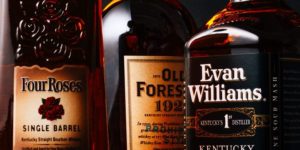
Bourbon’s legal definition varies somewhat from country to country, but many trade agreements require that the name “bourbon” be reserved for products made in the United States. Interestingly enough, the U.S. regulations for labeling and advertising bourbon apply only to products made for consumption within the United States; they do not apply to distilled spirits made for export. Canadian law requires products labeled bourbon to be made in the United States and also to conform to the requirements that apply within the United States. But in countries other than the United States and Canada, products labeled bourbon may not necessarily carry the same standards. For example, in the EU, products labeled as bourbon are not required to conform to all the regulations that apply within the United States, although they still must be made in the U.S. Confused yet?
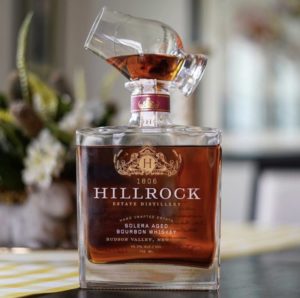
Here are the Federal Standards for bourbon that is earmarked for US consumption:
- Must be produced in the United States
- Must be made from a grain mixture that is at least 51% corn
- Aged in new, charred oak containers
- Distilled to no more than 80% ABV (or a whopping 160 proof)
- Entered into the container for aging at no more than 125 proof (62.5% ABV)
- Bottled (like other whiskeys) at no less than 80 proof or more (40% ABV)
Unlike Scotch Whisky, Bourbon has no minimum specified duration for its aging period. Products aged for as little as three months can and have been sold as bourbon. The exception is straight bourbon, which has a minimum aging requirement of two years. In addition, any bourbon aged less than four years must include an age statement on its label. However, Bourbon that has been aged for fewer than three years cannot legally be referred to as whiskey (or whisky) in the EU.
Bourbon that meets the above requirements, has been aged for a minimum of two years, and does not have added coloring, flavoring, or other spirits may be, but is not required to be, called straight bourbon.
- Bourbon that is labeled as straight that has been aged under four years must be labeled with the duration of its aging.
- Just as it is with Scotch Whisky, Bourbon that has an age stated on its label must be labeled with the age of the youngest whiskey in the bottle.
Bottled-in-Bond bourbon is yet another sub-category of straight bourbon and must be aged at least four years and can not be less than 100 proof (50% ABV) Time to take a look at Canadian Whisky eh?
Canadian Whiskey – is a type of whisky (we lost the ‘e’ in whisky again) produced in Canada. Most Canadian whiskies (i.e. Crown Royal) are blended multi-grain liquors containing a large percentage of corn spirits (though they typically call them rye…huh?) , and are typically lighter and smoother than other whisky styles. When Canadian distillers began adding small amounts of highly-flavorful rye grain to their mashes, people began demanding this new rye-flavored whisky, referring to it simply as “rye”. Today, as for the past two centuries, the terms “rye whisky” and “Canadian whisky” are used interchangeably in Canada and (as defined in Canadian law) refer to exactly the same product, which generally is made with only a small amount of rye grain
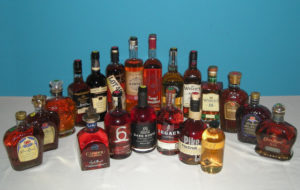
The regulations under Canada’s Food and Drugs Act stipulate the minimum conditions that must be met in order to label a product as “Canadian whisky” or “Canadian Rye Whisky” (or “Rye” Whisky) these are also upheld internationally through agreements. These regulations state that whisky must “be mashed, distilled and aged in Canada”, “be aged in small wood vessels for not less than three years”, “contain not less than 40% ABV” and “may contain caramel and flavoring” (Crown Royal has taken this allowance to dizzying heights). Within these parameters Canadian whiskies can vary considerably, especially with this allowance of flavoring. Thankfully, there is an additional requirement that they “possess the aroma, taste and character generally attributed to Canadian whisky”.
Canadian whiskies are most typically blends of whiskies made from a single grain, principally corn and rye, but also sometimes wheat or barley. Mash bills of multiple grains may also be used for some whiskies. The availability of inexpensive American corn, with its higher proportion of usable starches relative to other cereal grains, has led it to be most typically used to create base whiskies. While Canadian whisky may be labelled as a “rye whisky” this blending technique only necessitates a small percentage (typically around 10%) of rye to create the flavor, whereas much more rye is required if it were added to a mash bill alongside the more readily distilled corn.
The base whiskies are distilled to between 180 and 190 proof, which also allows some by products such as fusel alcohol, esters and aldehydes, creates a lighter taste. The relative lightness created by the use of base whiskies makes Canadian whisky useful for mixing into cocktails. The minimum three year aging in small wood barrels applies to all whiskies used in the blend. As the regulations do not limit the specific type of wood that must be used, a variety of flavors can be achieved by blending whiskies aged in different types of barrels. In addition to new wood barrels, charred or uncharred, flavor can be added by aging whiskies in previously used bourbon or fortified wine barrels for different lengths of time.
Irish Whisky – is odd enough, whiskey made on the island of Ireland. The word ‘whiskey’ (or whisky) comes from the Irish (or ‘Gaelic’) uisce beatha, meaning water of life. Irish whiskey was once the most popular spirit in the world, though a long period of decline from the late 19th century onwards greatly damaged the industry, so much so that although Ireland boasted at least 28 distilleries in the 1890s, by 1966 this number had fallen to just two, and by 1972 the remaining distilleries, Bushmills Distillery and Old Midleton Distillery.

However, since the 1990s, Irish whiskey has seen a resurgence in popularity and has been the fastest-growing spirit in the world every year since 1990. With exports growing by over 15% per annum, existing distilleries have been expanded and a number of new distilleries constructed. As of December 2019, Ireland has 32 distilleries in operation, with more either planned or under development. However, many of these have not been operating long enough to have whiskey produced on-site sufficiently aged for sale, and only two, Bushmills in Northern Ireland and Killbeggen, were operating prior to 1975, the latter with a long hiatus.
Irish whiskey has a smoother finish as opposed to the smoky, earthy overtones common to Scotch whisky due in part to peating. Peat is rarely used in the malting process outside of Scotland. There are notable exceptions to these rules in both countries, as a number of Scotch Whiskies do not utilize peat at all and a few Irish ones do.
Irish whiskey is a protected European Geographical Indication (GI) under Regulation (EC) No 110/2008. As of January 2016, production, labelling and marketing of Irish whiskey must be verified by the Irish revenue authorities as conforming with the Department of Agriculture’s 2014 technical file for Irish whiskey. Sound like sticks in the mud to me : )
Key requirements include specifications that Irish whiskey must:
- Be distilled and matured on the island of Ireland (comprising the Republic of Ireland and Northern Ireland) from a mash of malted cereals with or without whole grains of other cereals and which has been:
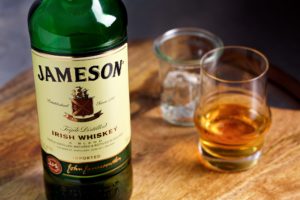
- saccharified by the diastase of malt contained therein (say what?), with or without other natural enzymes;
- fermented by the action of yeast
- distilled at an alcoholic strength of less than 94.8% ABV in such a way that the distillate has an aroma and taste derived from the materials used and only plain water and caramel color is added to it
- subject to the maturation of the final distillate for at least three years in wooden casks (or barrels), such as oak, not exceeding 700 litres / 185 US Gallons / 154 imperial gallons) capacity (look familiar?)
- Retain the color, aroma and taste derived from the production process referred to above
- Have a minimum alcoholic by volume content of 40%
Individual technical specifications for the three varieties of Irish whiskey, “single pot still”, “single malt”, “single grain”, plus “blended” whiskey (a mix of two or more of these varieties and one of the most popular Irish whiskeys) are also outlined in the technical file. The use of the term “single” in the aforementioned varieties being permissible only if the whiskey is totally distilled on the site of a single distillery.
So, there you have it. Not mentioned but also part of the process, is the sharing of technique. Though, not required by law, many of these styles share certain traits, For instance fermentation by yeast, use of used barrels (though not all can do this) There’s always something to learn, but at least you now have a rudimentary knowledge of these more popular types of spirits. I’m assuming if you paid attention and drank along with me, you’re in a state of euphoria as I am. Cheers my friend and be sure to leave comments so I know you stopped by and we were able to share a dram? shot? belt? Jeez…everything is so different, yet somehow the same.
